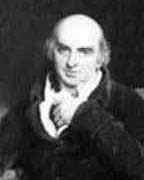Person: Morgan, William

William Morgan was an early actuary.
Mathematical Profile (Excerpt):
- It is apparent that, prior to joining the Society, William Morgan knew little mathematics.
- That reply started William on his career at Equitable Life.
- The tuition that William Morgan received from Dr Price (and Morgan's will to learn) must have been so good that in 1775, only a year after joining Equitable Life, William Morgan was appointed the Actuary of the Society.
- William Morgan, FRS, held, from 1775 to 1830 (i.e. for 55 years) the position in the Society called the 'Actuary', retiring at the advanced age of 80 (and William's son, Arthur, was to hold that position for the next 40 years).
- It was because of the name of William's position at Equitable Life that the name 'actuary' was given to professionals in insurance matters.
- Such calculations were carried out by William Morgan, by this time Actuary of the Society.
- The calculations were carried out by hand, policy by policy (there were of the order of 1,000 policies) and it must have required much work to determine the value of policyholder liabilities (how William Morgan would have appreciated a computer to do the work for him!).
- In 1800, Morgan analysed Equitable Life's own mortality experience expressing it as a proportion of the mortality rates used in the premium basis, finding it to be about 40% lighter than that used in the premium basis.
- Morgan also appreciated that there was such a thing as "select" mortality i.e. the reduced mortality for new entrants who had been recently underwritten by the life office.
- Price and Morgan both understood that if the mortality rates and/or interest experienced by a life office were less (more) than those which had been used to calculate the premiums at the policy's outset then a interest/mortality profit (loss) would be made by the life office.
- In fierce opposition to certain policyholders, Price and Morgan both felt that only a proportion of the surplus assets could be distributed to policyholders.
- Price and Morgan both felt that any distribution of surplus should be by way of an increase to the policy's claim value (i.e. as reversionary bonuses) rather than diminish the assets of the life company by distributing some of the surplus as an immediate cash payment to policyholders.
- In his rôle as Actuary, Morgan insisted that a valuation of policyholder liabilites should be carried out before any distribution of surplus to policyholders was made and that not more than two-thirds of the surplus should be distributed to policyholders as reversionary bonuses (i.e. additions to the sum assured).
- In 1789, Morgan received the Copley Medal of the Royal Society for his first two papers on life assurance mathematics.
- Morgan's analysis is not quite right as he assumes that if two lives, xxx and yyy (xxx being the younger life) both die within a given year (having both been alive at the start of the year), then the probability of yyy dying first is always ½.
- William Morgan became well-known in insurance circles and by the end of the 18th century he had established himself as the pre-eminent actuary in the U.K. He was consulted by Government when the National Debt Office began the sale of annuities in 1808.
- Although he did not know it, Morgan had produced X-rays 110 years before Röntgen in 1895.
- William's first son, also called William Morgan (1791-1818), entered Equitable Life but died at the age of 28.
- William Morgan's grandson, also called William Morgan (1831-1897), entered the Equitable but was never the Actuary.
- Thus, the Morgan and Price families were associated with Equitable Life for well over 100 years and the name 'Morgan' is, in actuarial circles, forever associated with Equitable Life.
Born 26 May 1750, Bridgend, Wales. Died 2 May 1833, London, England.
View full biography at MacTutor
Tags relevant for this person:
Origin Wales
Thank you to the contributors under CC BY-SA 4.0! 

- Github:
-

- non-Github:
- @David-O-Forfar
References
Adapted from other CC BY-SA 4.0 Sources:
- O’Connor, John J; Robertson, Edmund F: MacTutor History of Mathematics Archive
